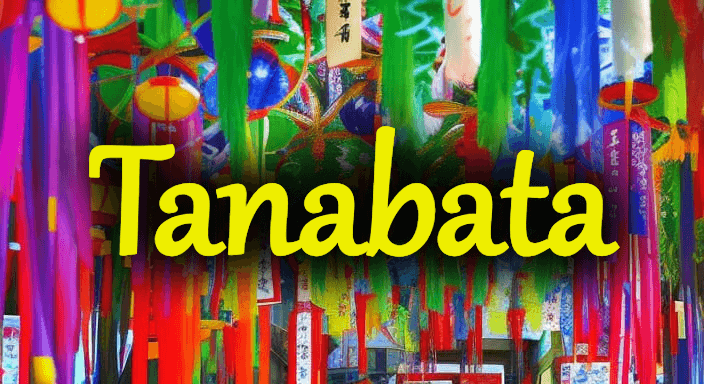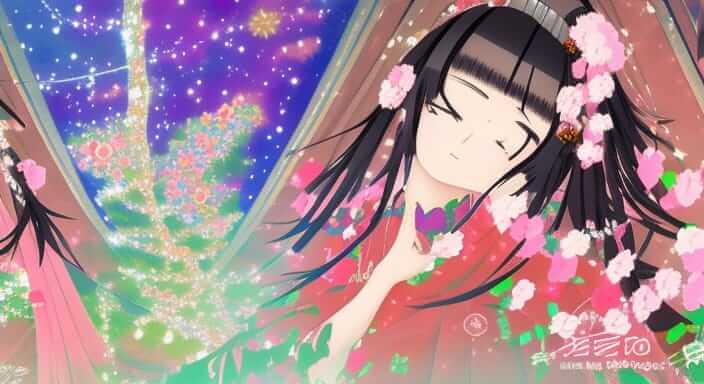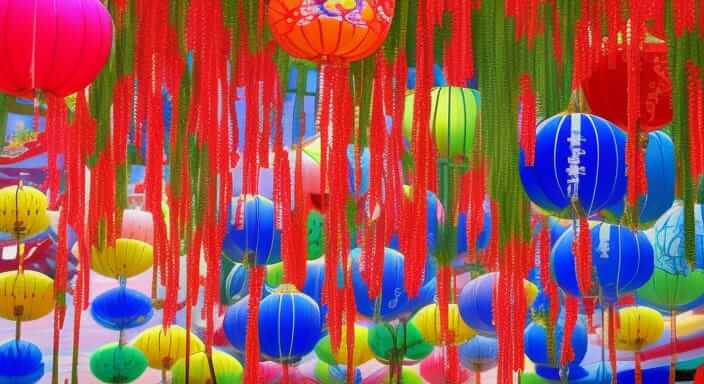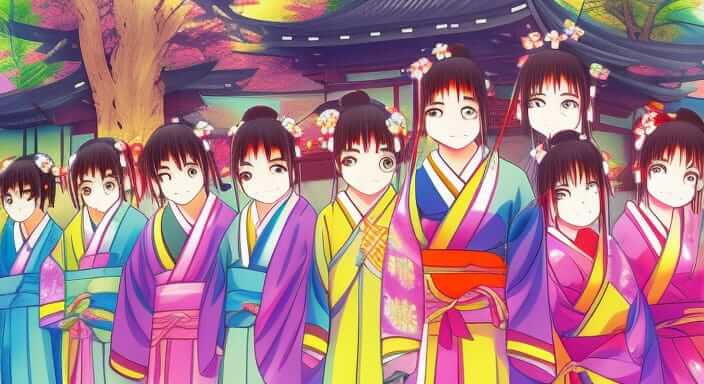Discover the enchanting world of Tanabata, the traditional Japanese festival celebrated for love, wishes, and community. Learn about the romantic origins, the symbolism of wishes, and the cultural traditions that make Tanabata a cherished occasion in Japan.

Tanabata, also known as the Star Festival, is a traditional Japanese festival that celebrates the meeting of the deities Orihime and Hikoboshi (represented by the stars Vega and Altair) on the seventh day of the seventh lunar month. The festival has its origins in a Chinese legend, which was later adapted and adopted into Japanese culture.
According to the legend, Orihime, the weaver princess, and Hikoboshi, the cowherd, were in love but were separated by the Milky Way, represented by the Amanogawa River. They were only allowed to meet once a year on the seventh day of the seventh lunar month. On this day, it is believed that magpies form a bridge across the Milky Way, allowing the two lovers to reunite.
During Tanabata, people in Japan celebrate by writing wishes on small pieces of paper known as tanzaku and hanging them on bamboo branches. The tanzaku are often colorful and decorated with origami and other ornaments. The bamboo branches, along with the wishes, are displayed in homes, schools, and public spaces.
The festival is marked by various cultural events, including parades, fireworks, and traditional dances. In some regions, there are also contests and competitions, such as poetry contests and paper-folding competitions.
Tanabata is a joyful and romantic festival that highlights the importance of love and wishes. It is widely celebrated across Japan, although the specific customs and traditions may vary from region to region.

When is Tanabata
Tanabata is traditionally celebrated on the seventh day of the seventh lunar month according to the traditional Japanese calendar. However, the exact date of Tanabata varies depending on whether the lunar or solar calendar is followed.
In most regions of Japan, Tanabata is celebrated on July 7th of the Gregorian calendar. This date is commonly observed in modern times, aligning with the Western calendar. However, some regions, such as parts of Tohoku in northern Japan, still follow the lunar calendar and celebrate Tanabata in August.
It’s worth noting that there might be slight variations in the celebration dates and customs across different regions of Japan due to local traditions and interpretations of the festival.
What is the meaning of Tanabata?
The word “Tanabata” itself can be translated as “Evening of the Seventh” or “Seventh Evening” in Japanese. The festival is named after the specific date on which it is celebrated, which is the seventh day of the seventh lunar month according to the traditional Japanese calendar. The festival is also known as the “Star Festival” due to its association with the stars Vega (represented as Orihime) and Altair (represented as Hikoboshi) in the popular legend.
The meaning of Tanabata goes beyond its literal translation. The festival is rooted in a tale of love, longing, and reunion. It represents the yearning of two lovers, Orihime and Hikoboshi, who were separated by the Milky Way and could only meet once a year on the seventh day of the seventh lunar month. Tanabata embodies themes of love, romance, and the fulfillment of wishes.
In a broader sense, Tanabata can also symbolize the importance of cherishing connections and the power of hope. The festival encourages people to write their wishes and aspirations on tanzaku (small pieces of paper) and hang them on bamboo branches. It serves as a reminder to pursue dreams, express desires, and believe in the possibility of their fulfillment.
Overall, the meaning of Tanabata encompasses love, reunion, hope, and the celebration of dreams and aspirations. It is a festive occasion that brings communities together to appreciate the beauty of the legend, express their hopes and desires, and enjoy cultural traditions.

What is Tanabata celebrated for?
Tanabata is primarily celebrated to commemorate the meeting of the deities Orihime and Hikoboshi, represented by the stars Vega and Altair, respectively. The festival originates from a Chinese legend that was adapted and adopted into Japanese culture.
The celebration of Tanabata serves several purposes:
- Love and Romance: Tanabata is often considered a romantic festival, emphasizing the love between Orihime and Hikoboshi. It represents the yearning for love and the belief in the power of true love to overcome obstacles. Many couples celebrate Tanabata as a special occasion to express their affection for each other.
- Wishes and Aspirations: The festival provides an opportunity for people to write their wishes, dreams, and aspirations on tanzaku (small pieces of paper) and hang them on bamboo branches. It is believed that during Tanabata, the deities are more likely to grant these wishes. People hope for success, happiness, good health, academic achievements, and various other personal desires.
- Cultural Traditions: Tanabata is an integral part of Japanese culture and is celebrated as a way to honor traditions and heritage. It showcases traditional arts, crafts, music, dance, and poetry. Many communities organize parades, fireworks displays, and other cultural events during the festival.
- Community Bonding: Tanabata brings people together, fostering a sense of community and togetherness. People gather to celebrate, share food and festivities, and enjoy the vibrant atmosphere. Schools, neighborhoods, and public spaces are often adorned with colorful decorations, bamboo branches, and tanzaku, creating a festive ambiance.
Overall, Tanabata is celebrated to commemorate the legendary meeting of Orihime and Hikoboshi, to express love and romantic feelings, to make wishes and aspirations, to honor cultural traditions, and to strengthen community bonds. It is a joyful occasion filled with hope, celebration, and a belief in the power of dreams.

Is Tanabata a romantic festival?
Yes, Tanabata is often considered a romantic festival in Japan. The festival is rooted in a tale of love between the celestial weaver princess, Orihime (represented by the star Vega), and the cowherd, Hikoboshi (represented by the star Altair). According to the legend, they were separated by the Milky Way and could only meet once a year on the seventh day of the seventh lunar month during Tanabata.
The story of Orihime and Hikoboshi represents the yearning for love and the longing to be reunited with one’s beloved. This romantic aspect of the legend has made Tanabata a special occasion for expressing love and affection. Couples often celebrate the festival by exchanging gifts, going on dates, or sharing romantic moments.
In addition, the tradition of writing wishes on tanzaku (small pieces of paper) during Tanabata often includes wishes for love, relationships, and marital happiness. Many people write wishes for finding a partner, strengthening their current relationships, or expressing their love for someone special.
While Tanabata is not solely focused on romance and has broader cultural and symbolic meanings, its association with the love story of Orihime and Hikoboshi has made it a romantic festival for many people in Japan.